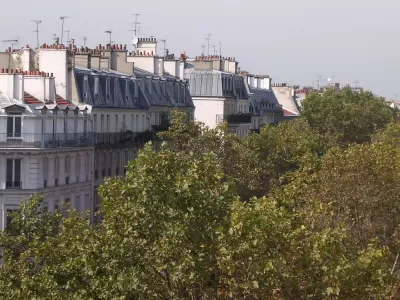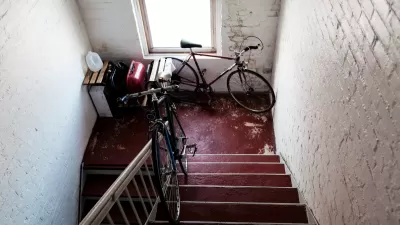How many now-classic design features are actually tax-avoidance strategies?

On the 99% Invisible blog, producer Kurt Kohlstedt shares how, "from basic materials to entire architectural styles, building codes and taxation strategies have had huge historical impacts on the built world as we know it."
Some of the world's most celebrated vernacular architecture may in fact be the "product of regulation and taxes as much aesthetic tastes." For example:
- Paris's mansard roofs started in part as a means for builders to optimize space under height limitations dating from 1783. "The limit was based on measuring up to the cornice line, leaving out the roof zone above," Kohlstedt explains.
- The narrow shape of Dutch canal houses was encouraged by a tax that targeted canal frontage. Efforts to avoid that tax produced a ripple effect, Kohlstedt notes: "This typology evolved narrower staircases, necessitating exterior hoist systems to move furniture and goods into and out of upper floors."
On the blog, 99% Invisible shares more examples of regulation-driven architecture from around the world—and debunks fabled design genealogies that turn out to be myths.
FULL STORY: Vernacular Economics: How Building Codes & Taxes Shape Regional Architecture

Study: Maui’s Plan to Convert Vacation Rentals to Long-Term Housing Could Cause Nearly $1 Billion Economic Loss
The plan would reduce visitor accommodation by 25,% resulting in 1,900 jobs lost.

North Texas Transit Leaders Tout Benefits of TOD for Growing Region
At a summit focused on transit-oriented development, policymakers discussed how North Texas’ expanded light rail system can serve as a tool for economic growth.

Using Old Oil and Gas Wells for Green Energy Storage
Penn State researchers have found that repurposing abandoned oil and gas wells for geothermal-assisted compressed-air energy storage can boost efficiency, reduce environmental risks, and support clean energy and job transitions.

Private Donations Propel Early Restoration of Palisades Playground
Los Angeles has secured over $1.3 million in private funding to restore the Pacific Palisades playground months ahead of schedule, creating a modern, accessible space that supports community healing after recent wildfires.

From Blight to Benefit: Early Results From California’s Equitable Cleanup Program
The Equitable Community Revitalization Grant (ECRG) program is reshaping brownfield redevelopment by prioritizing projects in low-income and environmental justice communities, emphasizing equity, transparency, and community benefits.

Planting Relief: Tackling Las Vegas Heat One Tree at a Time
Nevada Plants, a Las Vegas-based nonprofit, is combating the city’s extreme urban heat by giving away trees to residents in underserved neighborhoods, promoting shade, sustainability, and community health.
Urban Design for Planners 1: Software Tools
This six-course series explores essential urban design concepts using open source software and equips planners with the tools they need to participate fully in the urban design process.
Planning for Universal Design
Learn the tools for implementing Universal Design in planning regulations.
Ascent Environmental
Borough of Carlisle
Institute for Housing and Urban Development Studies (IHS)
City of Grandview
Harvard GSD Executive Education
Toledo-Lucas County Plan Commissions
Salt Lake City
NYU Wagner Graduate School of Public Service





























